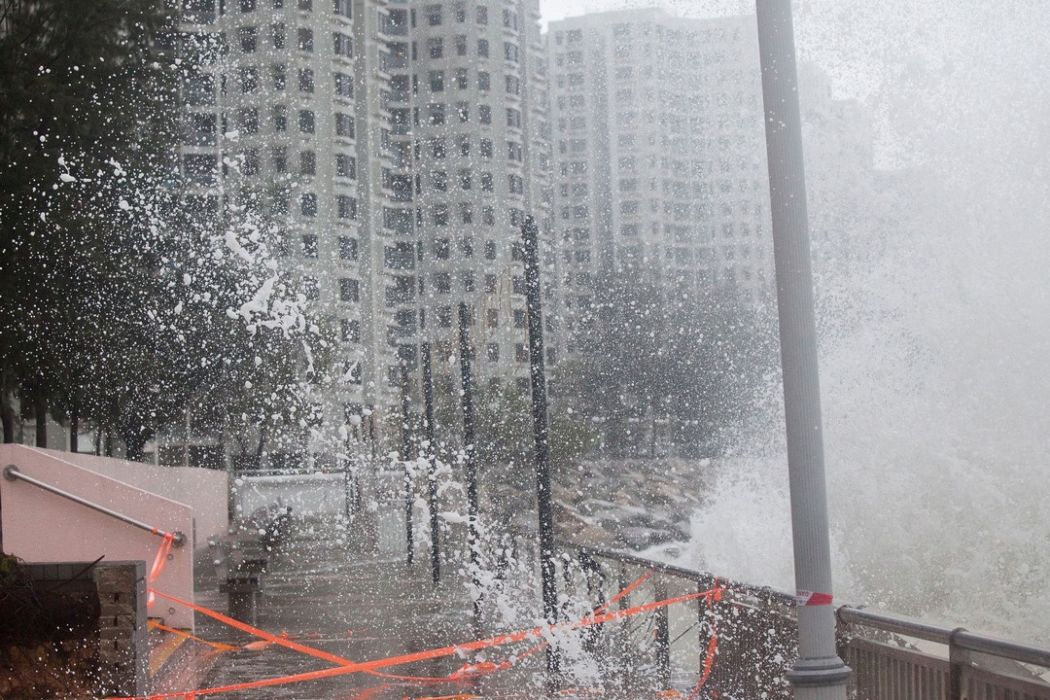By Dr. Jeffrey Hung
Climate change is one of the greatest environmental threats to humanity. The use of fossil fuels is changing the climate at an unprecedented rate. Global greenhouse gas emissions have risen since pre-industrial times, predominantly driven by economic and population growth. The globe is heating up, and the frequency and severity of extreme weather events is increasing.
No one city can escape from climate change. More than 21,000 natural catastrophes have occurred worldwide between 1980 and 2012, of which 87 per cent were weather-related. They have taken 2.3 million people’s lives and brought US$3.8 trillion of economic losses.

Hong Kong, being a coastal city, is vulnerable to climate change. Since Hong Kong has a long coastline of 733km, coastal flooding is likely when the sea level rises. When there are tropical cyclones, flooding from storm surges will be magnified.
Rainwater runoff can also cause flooding from heavy and prolonged rain. Last week, Typhoon Hato smashed into the Pearl River Delta Region. Ten Macau citizens died and more than 26,000 people in the southern province of Guangdong were evacuated to temporary shelters.
Hato also ripped through Hong Kong, causing serious flooding, landslides and multiple injuries.

Extreme weather is becoming more common. Hong Kong will frequently be affected by extreme rainfall, extreme sea levels and storm surges. Although the city has done substantial work on flood prevention over the years, it still can not withstand floods of higher strength.
Global sea level rise will lead to coastal changes all over the world. Many cities are now strengthening their defences against flooding. For instance, Japan has built super levees along the Arakawa River in Tokyo to prevent flooding in the low-lying area. New York is also planning to construct a “Big U” seawall to protect Lower Manhattan from floodwater, storm surges, and other extreme weather events.
The Hong Kong Government needs to reinforce our urban fabric and coastal infrastructure to prevent flooding in the next several decades.

According to the Hong Kong Observatory, the annual average rainfall in Hong Kong is about 2,400mm per year. The occurrence of heavy precipitation events has increased from 4.5 days in 1947 to 7 days in 2016. It is predicted that the average rainfall intensity will keep increasing.
To cope with stormwater flooding in the inner city, the Government could adopt the “Sponge City” concept to collect excess rainfall and integrate flood control in urban design. Instead of diverting surface water runoff, sponge city aims at absorbing, capturing, controlling and purifying rainwater runoff within its own region.
Sponge city also incorporates a variety of green infrastructure such as green belts and roofs, wetlands, rain gardens, filtration pools, retention ponds, and permeable pavements to absorb excess rainwater and replenish underground water.

China has put forward the sponge city concept and selected 16 cities for pilot testing in 2015. The pilot sponge city projects in Beijing, Shanghai and Xinjiang showed positive results, controlling 85 percent of runoff.
Climate change is already happening and affecting all of us. Recent devastations to life and infrastructure caused by extreme weather highlight the significant and concrete impact of climate change. It requires immediate action to reduce carbon emissions and improve the city’s resilience.

The Hong Kong Government should identify the risks, reinforce the infrastructure, establish recovery programmes, educate the public, and finance the reinforcements and adaptation measures to make Hong Kong truly climate change ready.
Dr. Jeffrey Hung is the Research, Development and Strategy Manager at Friends of the Earth (HK).
